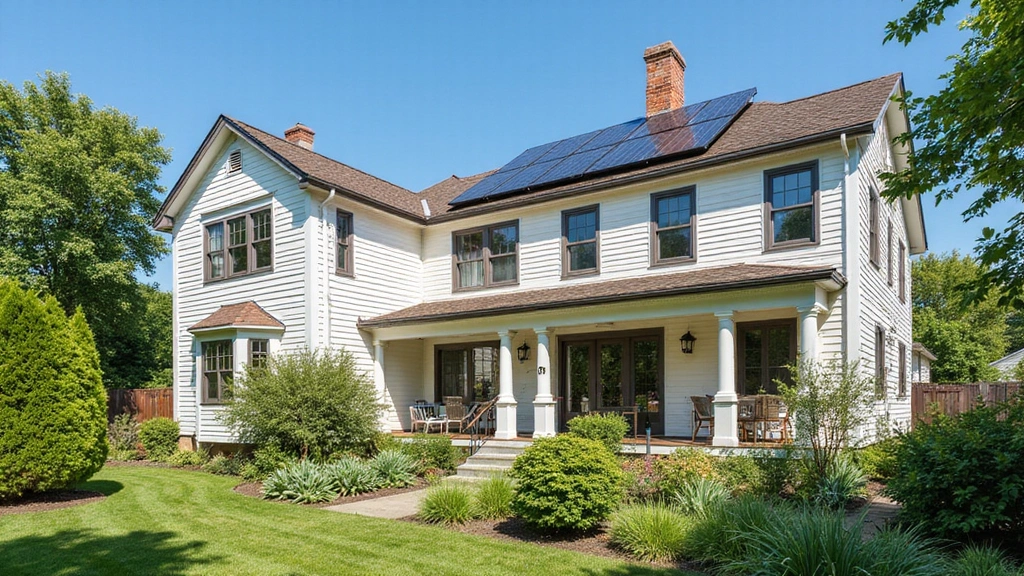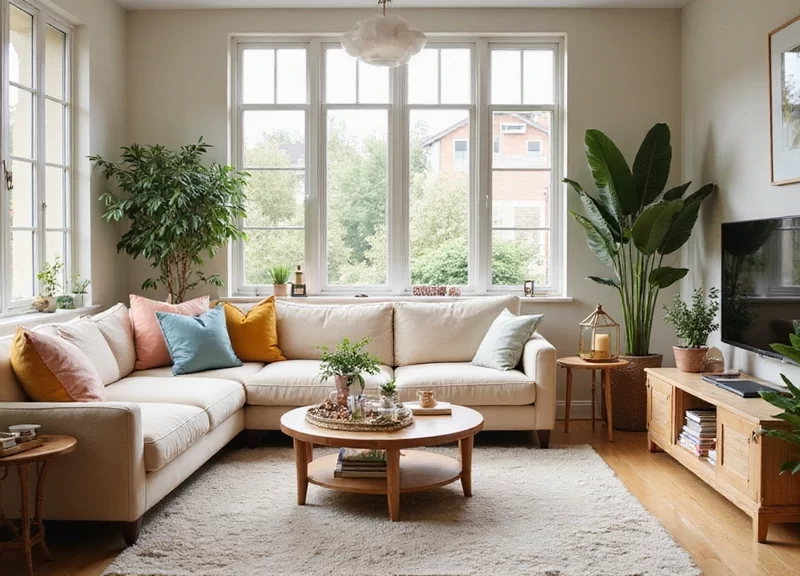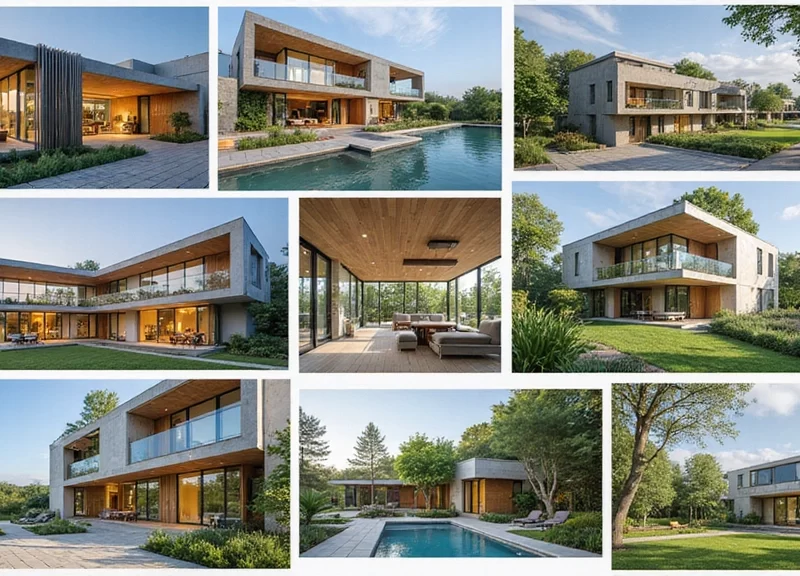When it comes to building or buying a home, the desire for energy efficiency is more important than ever.
These 16 traditional house plans not only bring timeless charm but also save you money on energy costs with their innovative designs and sustainable features.
From clever insulation techniques to solar panel installations, these plans blend aesthetics with functionality, making them ideal for eco-conscious homeowners.
Get ready to be surprised by the unique features of each house plan that can help you reduce your carbon footprint while keeping your wallet happy.
1. Classic Colonial Design
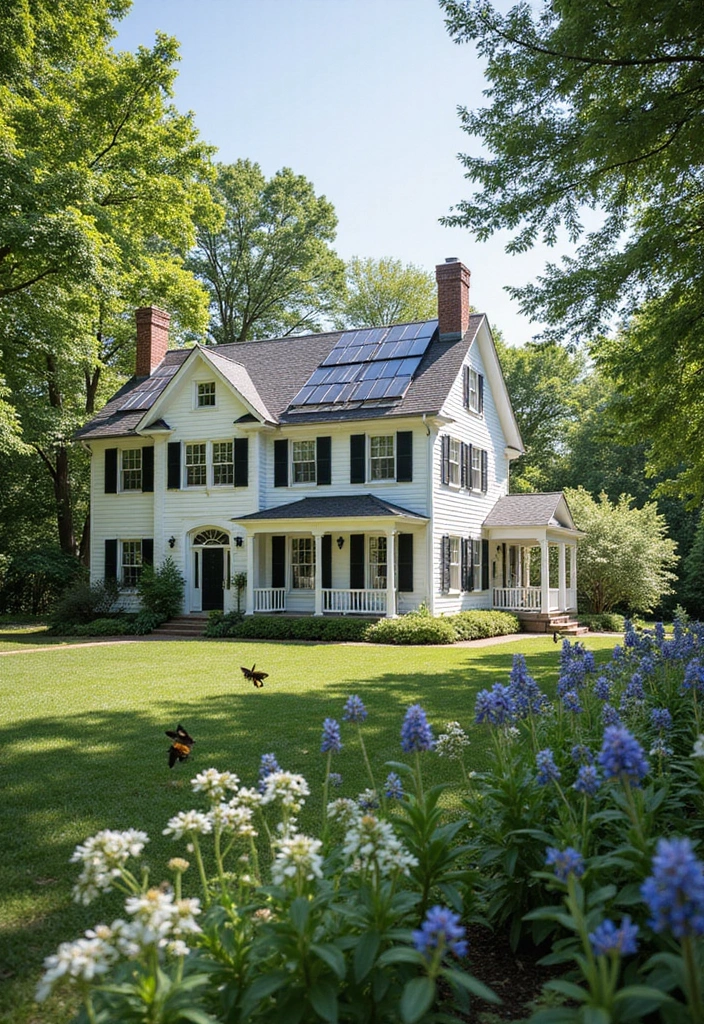
Colonial house plans are not only steeped in history but also offer remarkable energy efficiency. Their symmetrical design and spacious roofs make them ideal candidates for solar panel installations, allowing homeowners to harness renewable energy effectively.
The classic double-hung windows in these homes facilitate excellent ventilation while providing superb insulation, helping to keep energy costs in check. Many contemporary Colonial designs integrate advanced insulation materials that further enhance their energy-saving capabilities.
With well-defined spaces and open living areas, these homes maximize natural light, significantly reducing the reliance on artificial lighting. To ensure comfortable temperatures throughout the year, consider investing in a high-efficiency HVAC system.
For added efficiency, opt for energy-efficient appliances in your kitchen, which can drastically decrease electricity bills. Additionally, installing smart home systems can optimize your energy usage and enhance convenience.
To complement your Colonial home’s aesthetic, look for Colonial-style lighting fixtures that not only provide illumination but also contribute to the home’s traditional charm.
2. Craftsman Charm
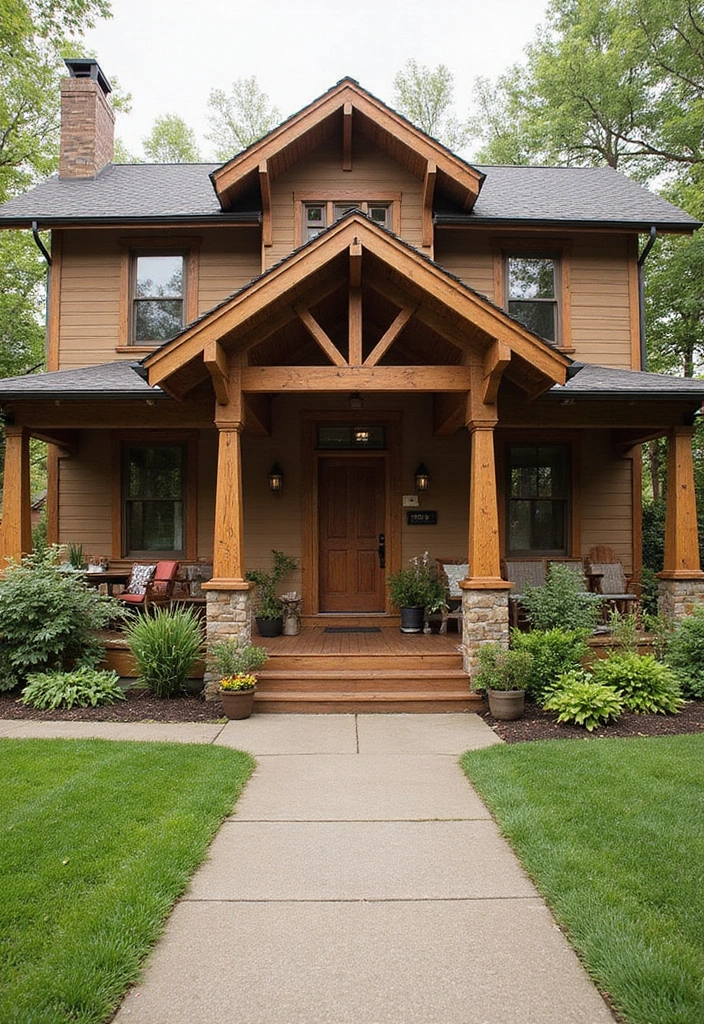
Craftsman homes are celebrated for their exquisite woodwork and inviting atmosphere, but they also stand out for their impressive energy efficiency.
These charming residences often feature wide eaves and overhangs that provide natural shade, which helps maintain a cooler indoor environment during the hot summer months. Many Craftsman designs embrace sustainable materials, such as bamboo flooring and reclaimed wood furniture, making them both aesthetically pleasing and eco-friendly.
Open floor plans are a hallmark of Craftsman homes, promoting optimal airflow and allowing for energy-efficient living without sacrificing comfort.
Furthermore, the built-in furniture typical of these homes reduces the need for additional furnishings, conserving resources. To enhance the energy efficiency of your Craftsman home, consider adding LED light fixtures, such as LED light bulbs, that match the home’s style while also being energy-efficient. Incorporating skylights can further boost natural lighting, minimizing electricity usage and fostering a healthier indoor atmosphere with low-VOC paints and finishes.
3. Modern Farmhouse

The modern farmhouse style beautifully merges rustic charm with contemporary efficiency, making it a top choice for homeowners who prioritize energy-efficient designs. With open floor plans that facilitate improved airflow and abundant natural light, these homes can significantly lower energy consumption.
Features such as metal roofs and energy-efficient appliances are essential components, designed to endure various weather conditions while minimizing energy costs.
Moreover, incorporating smart technology like smart thermostats can further enhance the home’s efficiency, enabling homeowners to effortlessly monitor and control their energy usage.
When selecting designs, look for those that feature large windows and sliding glass doors to seamlessly connect indoor and outdoor spaces, while also considering energy-efficient heating and cooling systems that blend with the overall aesthetic. Additionally, implementing rainwater harvesting systems can significantly contribute to the home’s sustainability.
4. Mediterranean Revival
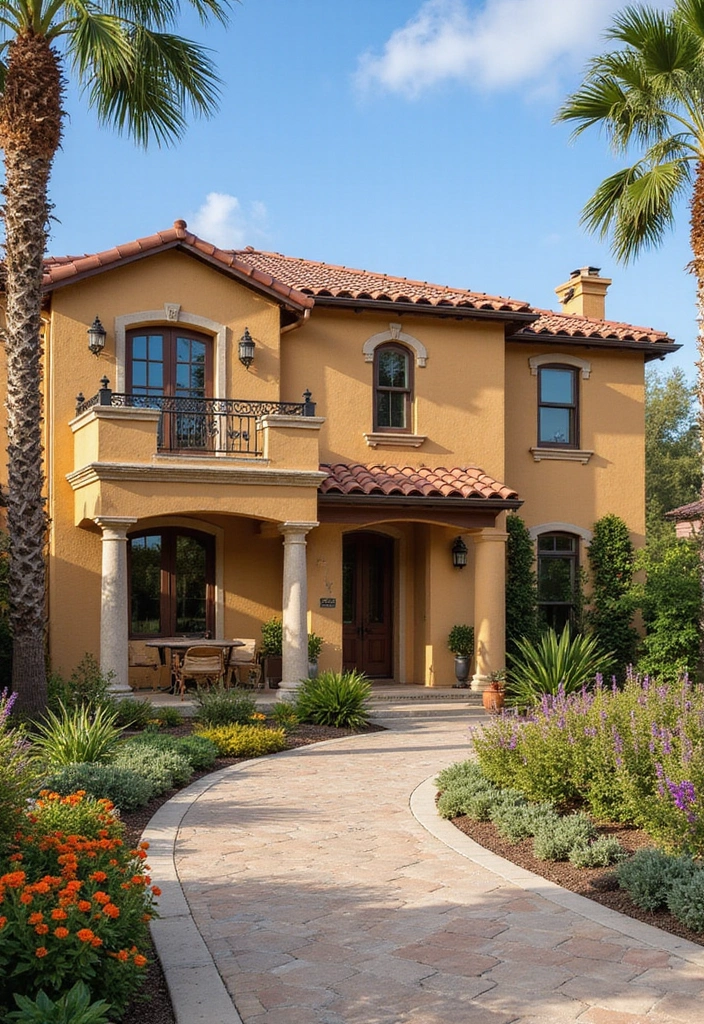
Mediterranean Revival homes are celebrated for their charming stucco exteriors and distinctive red-tiled roofs, but they can also be designed with energy efficiency in mind.
The thick walls characteristic of these homes offer remarkable insulation, helping to maintain comfortable temperatures year-round—keeping interiors cool during the summer and warm in the winter.
To further enhance energy efficiency, incorporating passive solar design principles is key; this approach maximizes natural light by utilizing the sun’s angle effectively.
Additionally, many Mediterranean designs include inviting outdoor living spaces that promote natural airflow, significantly reducing the reliance on mechanical cooling systems.
To complement this style while increasing energy efficiency, consider choosing exterior wall colors that reflect sunlight and minimize heat absorption. Drought-resistant landscaping is another excellent option, not only aligning with the aesthetic but also saving on water costs; check out drought-resistant plants for beautiful options.
For optimal energy performance, installing energy-efficient windows that match the architectural style is essential. You might also want to consider a green roof or terrace garden, which can enhance insulation and promote biodiversity—further contributing to a sustainable living environment. Additionally, explore solar water heaters to boost your home’s eco-friendliness.
5. Bungalow Bliss
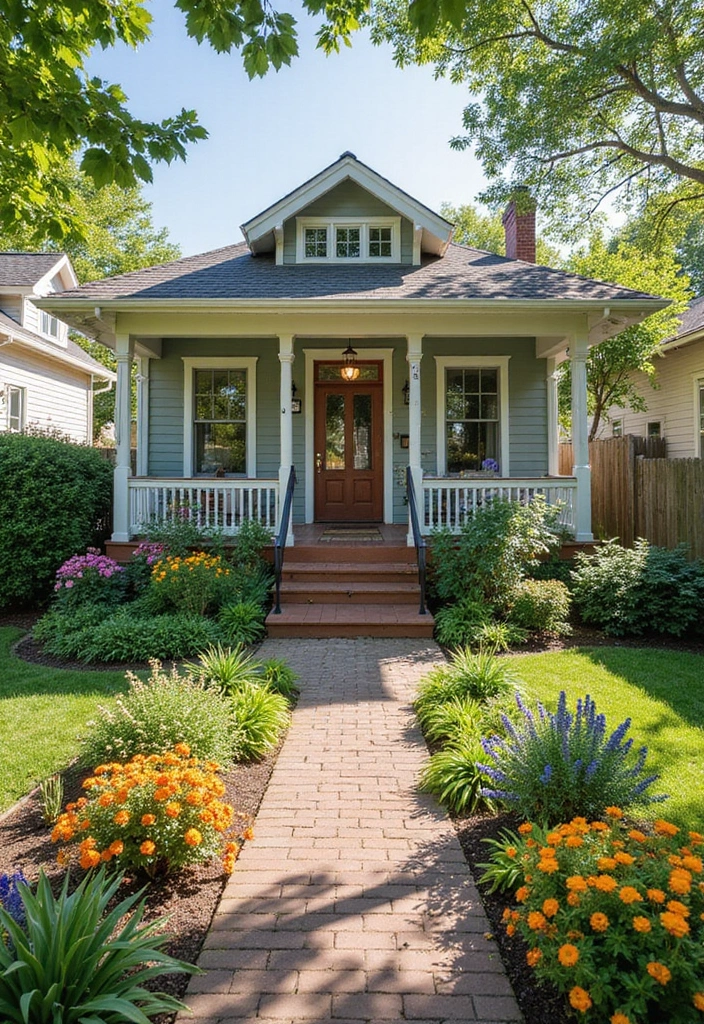
Bungalows are charming, compact homes that emphasize energy efficiency while ensuring comfort remains a priority. Their small footprint significantly reduces energy loss, making them a fantastic choice for those pursuing sustainable living. The design often features inviting front porches and expansive windows, which not only enhance natural light and airflow but also decrease reliance on artificial lighting and air conditioning.
To further boost sustainability, many modern bungalows utilize eco-friendly materials like bamboo flooring and recycled wood. Additionally, incorporating energy-efficient appliances that complement the space can create a harmonious balance between style and functionality.
Consider adding rain gardens with rain garden kits to effectively manage stormwater and enhance local biodiversity, ensuring your bungalow not only looks good but also contributes positively to the environment.
6. Victorian Elegance
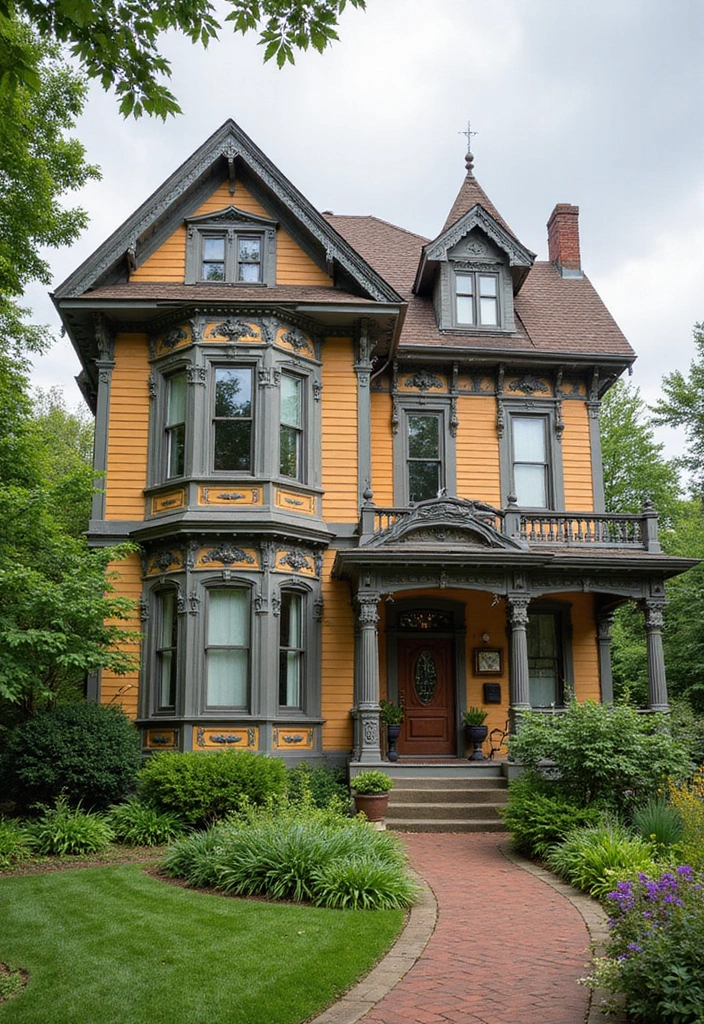
Victorian homes are celebrated for their ornate designs and rich historical context, yet they can be transformed into energy-efficient residences with careful planning and modern enhancements.
The hallmark features of these homes, such as steep roofs and tall windows, can be optimized for energy savings by integrating contemporary technologies. For instance, retrofitting with proper insulation and installing geothermal heating systems can provide sustainable warmth while preserving the home’s original charm.
Additionally, employing energy-efficient light fixtures that complement the Victorian aesthetic can enhance both functionality and style.
Moreover, incorporating smart home devices, like those found here, can elevate your home’s efficiency and convenience without compromising its historical elegance.
By choosing period-appropriate materials that also meet modern energy standards and implementing sustainable landscaping, you can significantly reduce energy needs while maintaining the unique character of your Victorian home.
7. Cape Cod Comfort

Cape Cod homes are celebrated for their classic simplicity, but they can also be tailored for outstanding energy efficiency. The steep rooflines of these homes facilitate effective snow and rain runoff while providing excellent ventilation opportunities, which are crucial for maintaining a comfortable indoor environment.
Incorporating energy-efficient windows and high-quality insulation can significantly reduce heat loss during the winter months. Moreover, the open floor plans characteristic of Cape Cod homes promote easy airflow, allowing for natural temperature regulation throughout the year.
To further enhance energy efficiency, consider using sustainable building materials that not only elevate the aesthetic appeal of your home but also support a greener lifestyle. Additionally, installing a high-efficiency heating system can seamlessly integrate with your home’s design while maximizing energy savings.
8. Log Cabin Retreat
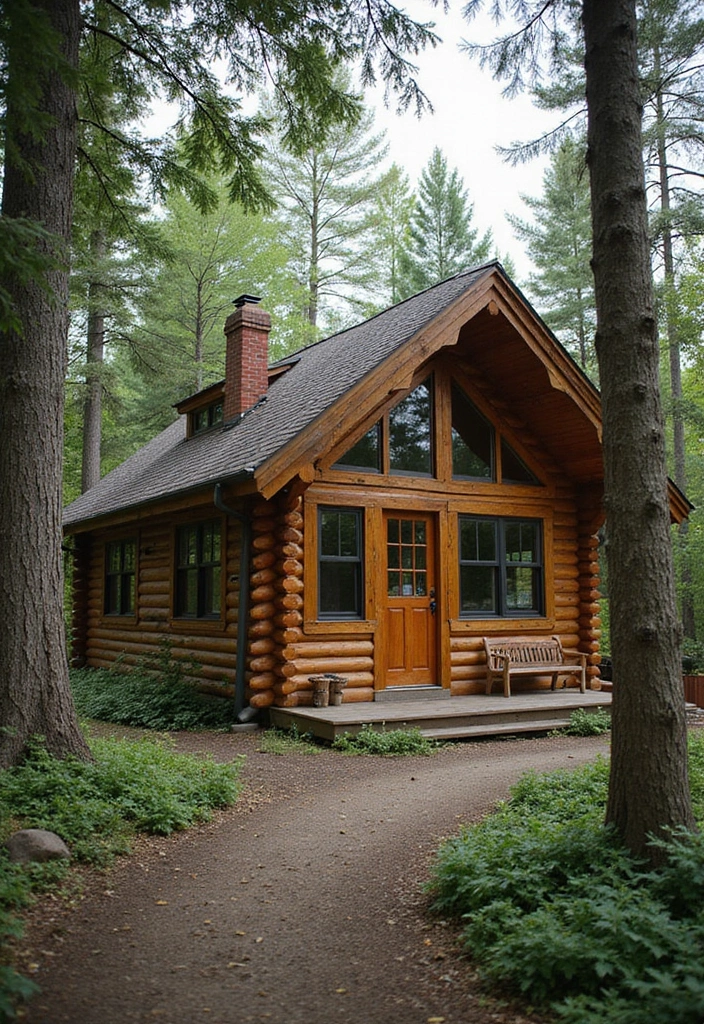
Log cabins are the epitome of rustic charm, seamlessly blending traditional aesthetics with modern energy efficiency. The natural insulation properties of wood are a key advantage, helping to regulate comfortable temperatures throughout the year.
Many contemporary log cabins are designed with passive solar principles in mind, featuring large windows that effectively capture sunlight, reducing the need for artificial lighting and heating. To further enhance your cabin’s eco-friendliness, consider using sustainable wood products that are sourced responsibly.
Incorporating energy-efficient appliances, such as those found here, can significantly lower your energy consumption and environmental impact. For those looking to take their energy savings to the next level, installing solar panel kits can provide a reliable source of renewable energy, making your log cabin even more sustainable.
By thoughtfully selecting materials and features, your log cabin can be both a cozy retreat and an energy-efficient haven.
9. Contemporary Traditional

Contemporary traditional homes seamlessly blend timeless architectural elements with modern energy efficiencies, creating a captivating design that resonates with a wide range of buyers.
These homes typically boast open layouts and expansive windows that maximize natural light, significantly decreasing reliance on artificial lighting. To further enhance energy management, incorporating smart home devices allows residents to effortlessly monitor and control their energy consumption.
In addition, many contemporary traditional houses utilize sustainable materials, promoting eco-friendliness while maintaining an appealing aesthetic. Unique features like green roofs or walls can provide excellent insulation and contribute to the home’s visual charm.
For optimal climate control, consider installing energy-efficient HVAC systems that harmonize with the overall design.
When planning your build, think about incorporating recycled building materials to minimize waste and enhance sustainability. Additionally, energy-saving landscaping can offer natural shade, further contributing to your home’s efficiency.
10. Farmhouse Colonial
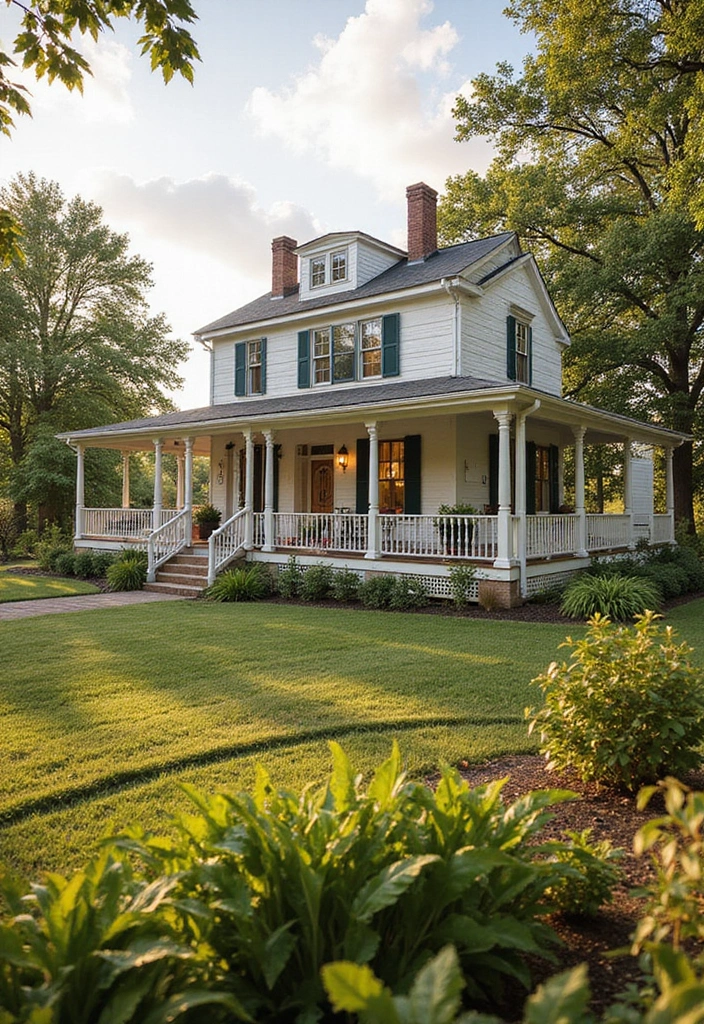
Farmhouse Colonial designs beautifully merge traditional charm with modern energy efficiency, providing spacious and inviting layouts.
These homes often feature expansive porches and adaptable living areas that promote excellent airflow and abundant natural light. By incorporating energy-efficient appliances and high-quality insulation, homeowners can drastically cut down on their energy bills while ensuring year-round comfort.
Many designs also integrate smart home technology to monitor energy consumption and enhance overall efficiency.
For those looking to embrace sustainability, using natural materials that harmonize with the environment is highly recommended. Additionally, installing a rainwater harvesting system can further minimize water costs and promote eco-friendliness.
To elevate the farmhouse aesthetic while maintaining efficiency, opt for energy-efficient appliances that complement the style, and consider incorporating native plants in landscaping to foster biodiversity.
11. Neo-Eclectic Style
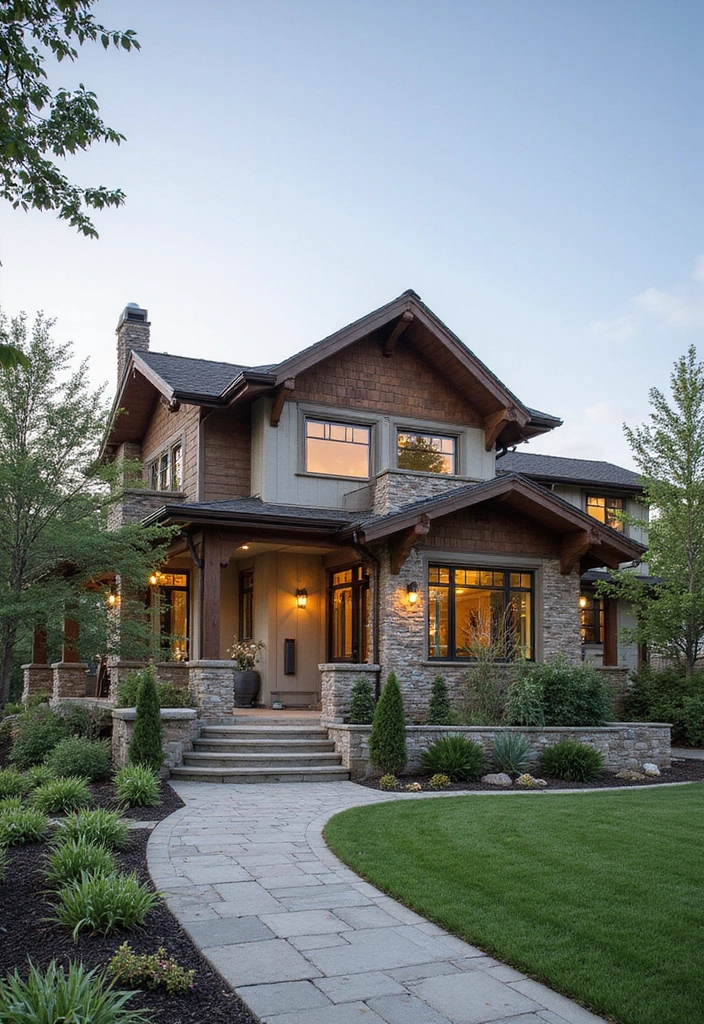
Neo-Eclectic homes present a modern twist on traditional architectural designs, seamlessly blending contemporary materials with energy-efficient features. These residences often embrace a variety of architectural styles, allowing homeowners the freedom to personalize their spaces while prioritizing energy conservation.
To enhance eco-friendliness, consider incorporating sustainable materials and advanced technology. Utilizing natural light and creating open spaces can significantly reduce energy costs while ensuring a comfortable living atmosphere.
For instance, integrating smart lighting systems that adjust based on the levels of natural light can optimize energy usage and create a more adaptable environment. Additionally, exploring renewable energy kits can further enhance the sustainability of your home.
When building or renovating, sourcing local building materials not only minimizes transportation emissions but also contributes to a more sustainable construction process. Embracing these elements can lead to a beautifully designed home that aligns with eco-friendly principles.
12. Prairie Style

Prairie-style homes are designed to harmonize with their surroundings while promoting energy efficiency.
These distinctive homes typically feature low-pitched roofs and wide eaves that offer natural shade, helping to lower cooling costs during hot months. By incorporating sustainable building materials and energy-efficient windows, you can significantly enhance the home’s overall efficiency.
The open floor plan of a Prairie-style home facilitates better airflow, which naturally helps to regulate indoor temperatures.
For added benefits, consider choosing colors that blend seamlessly with the natural landscape, not only for aesthetic appeal but also to enhance energy efficiency. Additionally, incorporating natural landscaping can support local wildlife, creating a more sustainable environment.
To promote sustainability even further, you might want to implement rainwater collection systems that can be seamlessly integrated into your home’s design. Lastly, investing in energy-efficient appliances will not only reduce your energy consumption but also align with the overall aesthetic of your Prairie-style home.
13. Minimalist Traditional
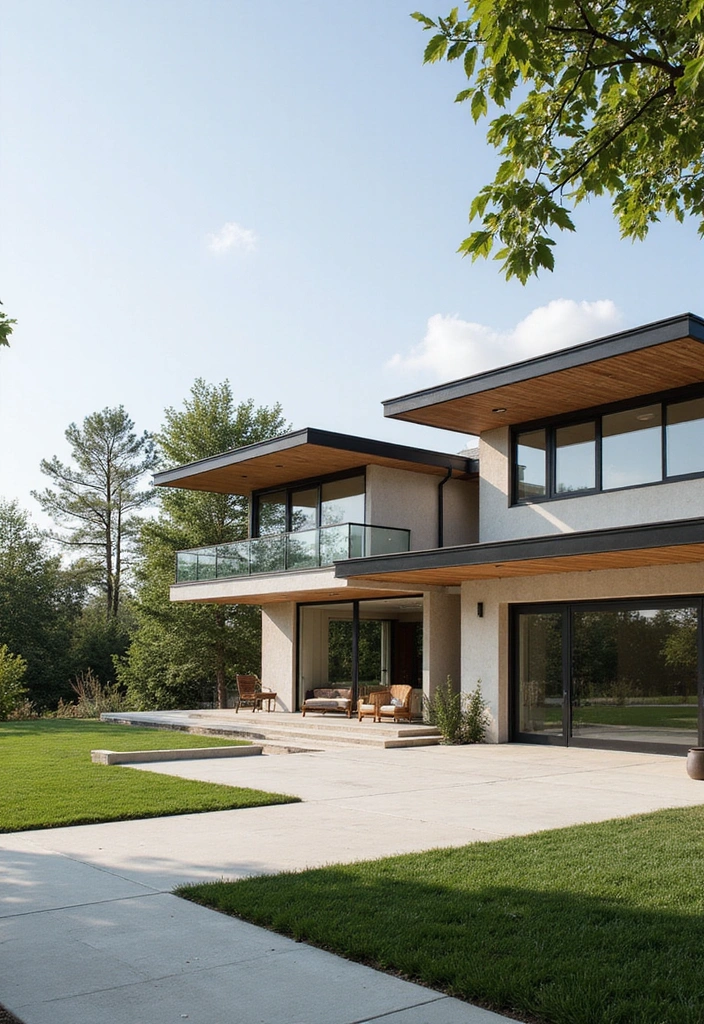
Minimalist traditional homes emphasize simplicity while ensuring energy efficiency.
These designs often feature clean lines and open spaces, allowing natural light and airflow to thrive, which can be enhanced by incorporating energy-efficient appliances that blend seamlessly into the aesthetic.
By utilizing sustainable materials and advanced energy-efficient systems, homeowners can significantly reduce their energy consumption.
The minimalist approach advocates for thoughtful design choices that prioritize functionality and efficiency, making it easier to integrate green technology products that align with these principles.
Additionally, opting for natural finishes can help maintain a clean and healthy indoor environment, further enhancing the overall design.
14. Green Gable Home
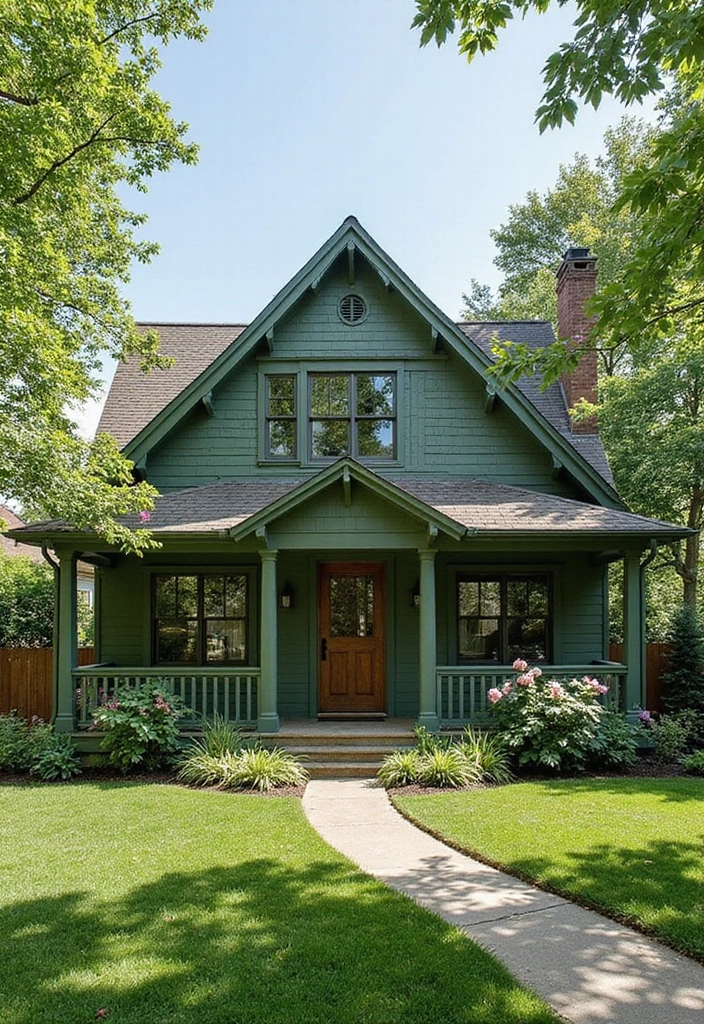
Green gable homes offer a charming blend of traditional aesthetics and modern energy efficiency, making them an excellent choice for eco-conscious homeowners.
With their distinctive gabled roofs, these homes promote superior ventilation and insulation, which helps keep energy costs manageable. To further enhance energy efficiency, homeowners can incorporate smart technology, allowing for real-time monitoring and control of energy usage.
Utilizing sustainable materials is also key to reducing your environmental impact. For instance, consider energy-efficient roofing materials that align with the architectural style of your home. Additionally, incorporating passive solar design features can optimize heating and cooling, making your home even more sustainable.
Don’t forget to choose energy-efficient windows that complement the gabled design, and think about installing smart irrigation systems to promote sustainable landscaping practices. For those interested in building, exploring sustainable building materials can further contribute to a greener lifestyle.
15. Split-Level Savings
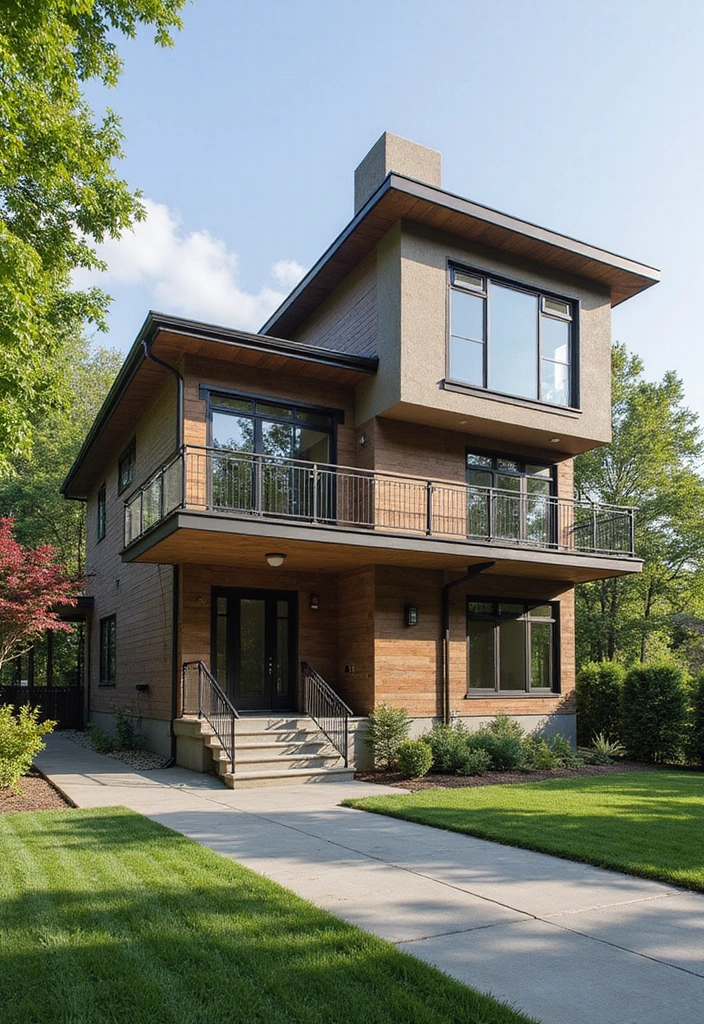
Split-level homes offer a creative design that not only enhances energy efficiency but also creates distinct living spaces tailored to modern lifestyles.
By maximizing the use of natural light, these homes help to minimize reliance on artificial lighting, which can lead to substantial savings on energy bills. Implementing energy-efficient appliances and employing advanced insulation techniques can dramatically reduce energy expenditures.
The multi-level layout promotes optimal airflow throughout the home, ensuring that indoor temperatures remain comfortable year-round.
To further enhance efficiency, consider designs that leverage natural shading elements to lower cooling costs. Opting for sustainable landscaping products and materials that align with the architectural style can also contribute to a greener home environment.
Additionally, utilizing smart home technology can streamline energy management, making it easier to monitor and reduce energy consumption. Incorporating native plants in your landscaping not only promotes sustainability but also enhances the beauty of your home.
16. Tudor Revival
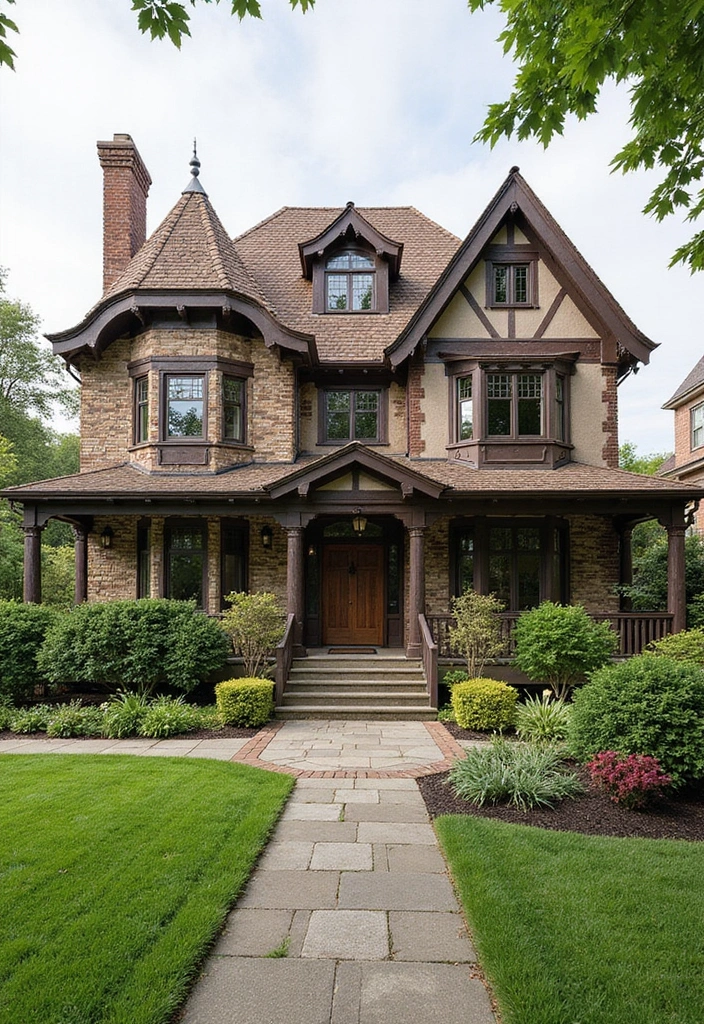
Tudor Revival homes are celebrated for their distinctive architectural features, and they can also be designed with energy efficiency in mind. The steep roofs and decorative half-timbering can be paired with modern insulation techniques to significantly reduce energy consumption.
Many designs now incorporate energy-efficient lighting, which not only enhances the traditional aesthetic but also provides excellent illumination without wasting energy.
Additionally, utilizing smart technology allows homeowners to monitor their energy usage effectively and maintain a comfortable indoor environment.
For a sustainable approach, consider integrating geothermal heating systems for efficient temperature control, along with sustainable landscaping products to enhance both the home’s aesthetic and its energy efficiency. By making these thoughtful choices, you can enjoy a beautifully designed Tudor Revival home that is also environmentally conscious.
Conclusion
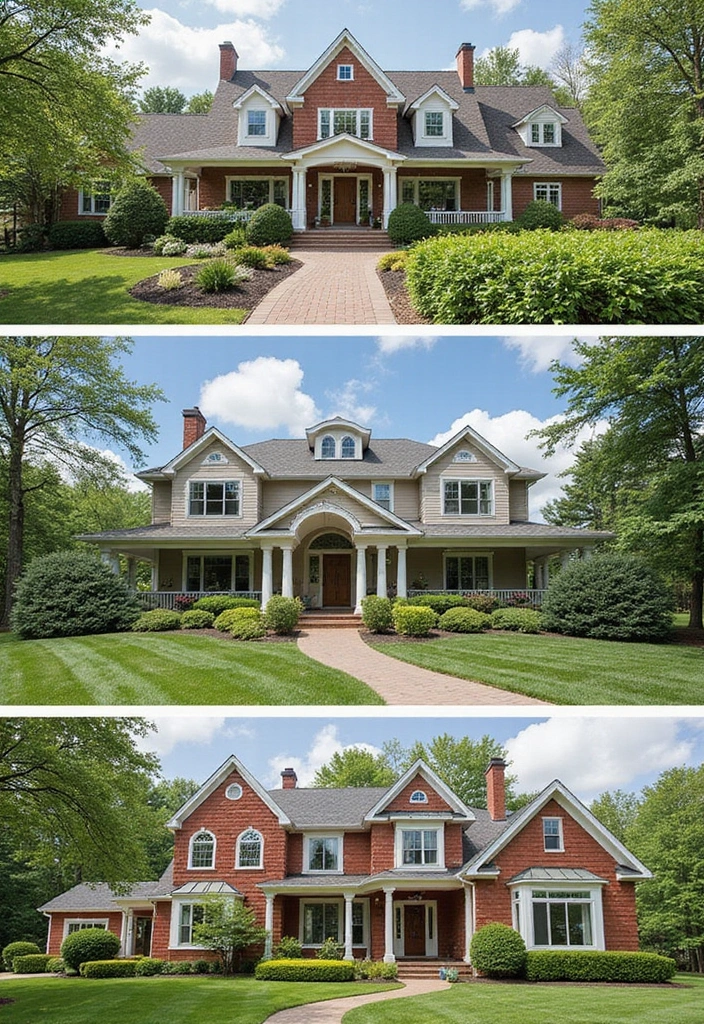
Choosing an energy-efficient traditional house plan can be a wise investment that pays off in lower utility bills and a reduced environmental footprint.
From Colonial charm to modern farmhouses, these designs showcase how you can blend timeless aesthetics with sustainable living practices.
As you contemplate your dream home, consider these options that not only meet your needs but also contribute to a healthier planet.
Note: We aim to provide accurate product links, but some may occasionally expire or become unavailable. If this happens, please search directly on Amazon for the product or a suitable alternative.
This post contains Amazon affiliate links, meaning I may earn a small commission if you purchase through my links, at no extra cost to you.
21 Innovative Office Buildings That Will Inspire Your Next Project (Check Out #3!)
